
The Tudor Arms Apartments are a historic building in Portland, Oregon, United States. The five-story building was completed in 1915. It has been on the National Register of Historic Places since 1994.

The Belcrest Apartments is an apartment building located at 5440 Cass Avenue in Midtown Detroit, Michigan. It was built in 1926 as the Belcrest Hotel, designated a Michigan State Historic Site in 1983, and listed on the National Register of Historic Places in 1984. It is significant as an early example of the apartment hotel development concept in Detroit, and a major early work of architect Charles N. Agree.
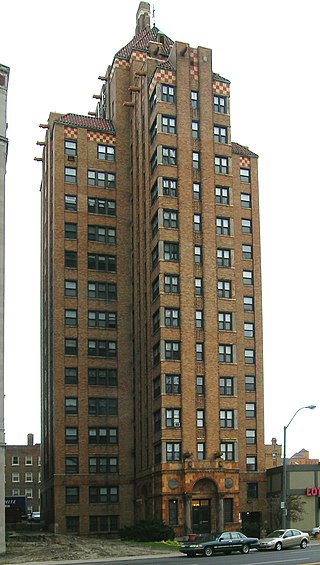
The Kean is an apartment building located at 8925 East Jefferson Avenue in Detroit, Michigan, directly adjacent to the Hibbard Apartment Building. It was listed on the National Register of Historic Places in 1985.
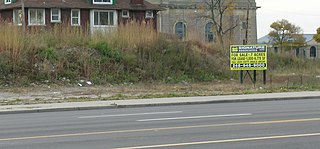
The Chateau Frontenac Apartments was an apartment building located in Detroit, Michigan. It bore the name of the famous Château Frontenac hotel. The building was listed on the National Register of Historic Places in 1991, but was subsequently demolished in 1999. It was removed from the National Register in 2020.

The San Marco is a historic Renaissance Revival apartment building in Downtown, Spokane, Washington that was built in 1904. It was designed by architect Albert Held. San Marco was listed on the U.S. National Register of Historic Places in 1987. It is also listed on the NRHP as a contributing property in the Riverside Avenue Historic District.
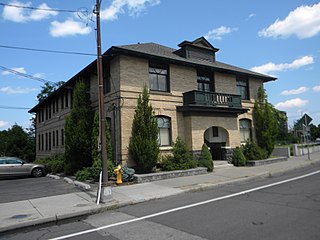
Amman or Ammann, in the Browne's Addition neighborhood of Spokane, Washington is a building constructed in 1904. It was designed by architect Albert Held. The building was listed on the U.S. National Register of Historic Places in 1987. Although the National Register of Historic Places list the property under the name Amman the Spokane Register of Historic Places lists the building as Ammann.

The Rink also known as The Link, is a historic apartment building located at Indianapolis, Indiana. It was built in 1901, and is a seven-story, six bay by six bay, Renaissance Revival style brick and terra cotta building on a raised basement. The main entrance corner features fluted Ionic order pilasters that extend from the third to the sixth story.
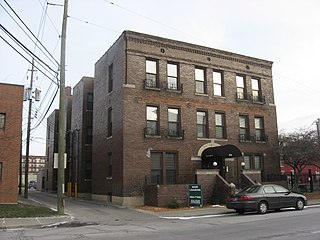
The Pennsylvania is a historic apartment building located at Indianapolis, Indiana. It was built in 1906, and is a three-story, double "H" plan, Classical Revival style red brick and grey limestone building. It features a round arched main entrance, wrought iron balcony grills, and terra cotta coping.

The Riverside Avenue Historic District is a 16.5 acres (6.7 ha) historic district in Downtown Spokane, Washington consisting of buildings constructed in the early 20th century, and was listed on the National Register of Historic Places in 1976. The listing includes 14 contributing properties, nine of which are considered primary and five are considered secondary.

The Marwood Apartments is an apartment building located at 53 Marston Street in Detroit, Michigan. It was listed on the National Register of Historic Places in 2019.
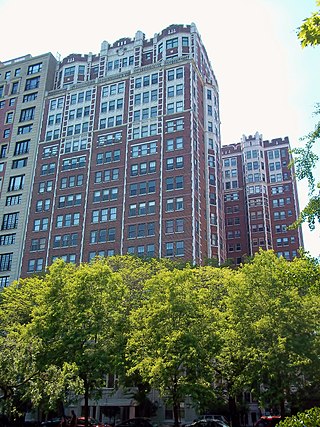
The Building at 2440 N. Lakeview Avenue is a historic apartment building in the Lincoln Park neighborhood of Chicago, Illinois. Built in 1926–27, the eighteen-story building was one of Chicago's many luxury apartment buildings constructed along Lake Michigan in the early twentieth century. The building used a semi-cooperative ownership model, in which the residents of the largest apartments had an ownership stake in the building while smaller units were rented; the cooperative model and its variations were popular with luxury apartments, as they gave residents control over how the building was run and who could live there. Architects Rissman & Hirschfeld designed the Tudor Revival building; while the Tudor Revival was one of many revival styles that became popular in the early twentieth century, it was relatively uncommon among Chicago's luxury apartments. The building's design features terra cotta arches around the entrances, ornamental terra cotta panels between the windows of the upper and lower floors, a balustrade atop the sixteenth floor, and a two-story penthouse with a broken parapet.

The Breslin is a historic six-story building in the Cliff/Cannon neighborhood of Spokane, Washington. It was designed by architect Albert Held in the Classical Revival style, and built in 1910 by W.H. Stanley with "Tenino sandstone, press red brick and cream-colored terra cotta" at a cost of $100,000.
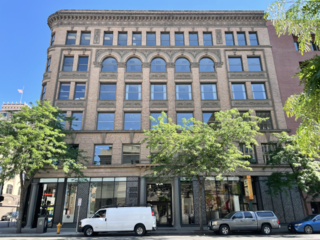
The Empire State Building, also known as the Great Western Savings and Loan Building, is a historic building in Downtown, Spokane, Washington. It was designed by architect John K. Dow, and built in 1899 for Charles Sweeny, an investor who had served under Union Army General George Armstrong Custer during the American Civil War of 1861–1865. It has been listed on the National Register of Historic Places since August 18, 1977.

The Eldridge Building is a historic building in Spokane, Washington. It was designed by architect Gustav Albin Pehrson, and built in 1925. It has been listed on the National Register of Historic Places (NRHP) since November 12, 1992. It is one of three historic buildings listed on the NRHP at the intersection of First Avenue and Cedar Street. To the west across Cedar is the Grand Coulee building and to the northwest, kitty-corner from the Eldridge Building, is the former Carnegie Library.

Lake Shore Apartments is a historic apartment building at 470-498 Sheridan Road in Evanston, Illinois. The three-story building was built in 1927. Its location was chosen to provide views of Lake Michigan and relative distance from Evanston's busier commercial areas; to compensate for this, the owners provided residents with transportation to local schools and public transit stations. Architect Roy F. France, who also designed several other Evanston apartment buildings, designed the building in the Georgian Revival style. The building features a brick exterior with terra cotta detailing, projecting bays and bow windows, and an arcade leading to a private courtyard.

240 Central Park South is a residential building in Midtown Manhattan in New York City. Designed by Albert Mayer and Julian Whittlesey, it was built between 1939 and 1940 by the J.H. Taylor Construction Company, an enterprise of the Mayer family. 240 Central Park South is designed in a combination of the Art Deco and Moderne styles, with over 300 apartments.

Spokane and its neighborhoods contain a patchwork of architectural styles that give them a distinct identity and illustrate the changes throughout the city's history. Spokane has a rich architectural history for a western city of its size and much of it is a product of its circumstances at the turn of the 20th century when as a rapidly growing city, the Great Fire of 1889 destroyed 32 blocks of the city center which was quickly rebuilt in a more grand fashion by a community flush with money coming from regional mining districts. Many of the architects that found work in the city and building on the blank slate of the downtown commercial district became highly esteemed architects such as Kirtland Cutter, who has been credited with giving the city a distinctive character. In particular, the city has a high concentration of Romanesque Revival style institutional and commercial buildings and American Craftsman bungalow residences. The architecture of Spokane gained national recognition in industry publications in the early 20th century.
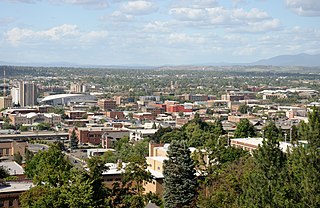
Cliff/Cannon is a neighborhood in Spokane, Washington. It is located immediately south of Downtown, Spokane, and on the lower reaches of the broader South Hill. The neighborhood is home to a medical district with Sacred Heart and Deaconess both having their main hospital campuses along Cliff/Cannon's denser northern edge. To the south the neighborhood becomes more residential. City parks break up the residential zoning of the southern half of Cliff/Cannon. It is adjacent to the Cannon Hill area of the neighboring but separate Manito/Cannon Hill neighborhood. The Marycliff-Cliff Park Historic District, a National Historic District listed on the National Register of Historic Places, is located within the neighborhood.
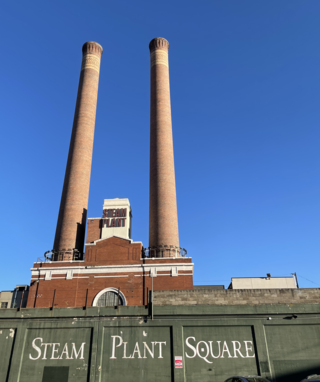
The Central Steam Heat Plant, commonly known as Steam Plant Square, or simply as the Steam Plant, is a historic building in Downtown, Spokane, Washington. Originally built to provide steam heating to more than 300 buildings in Spokane's city center, the Steam Plant served that purpose until the 1980s, when it was no longer viable. In the 1990s, the Steam Plant and adjacent Seehorn-Lang Building were converted into Steam Plant Square, a commercial, retail and restaurant center. The conversion maintained many of the industrial steam plant structures such as furnaces, boilers, catwalks and pipe networks, which can still be seen and explored by visitors and patrons. The Steam Plant's pair of 225 foot tall stacks have been a unique and iconic aspect of the city's skyline for more than a century, and are illuminated from their base at night. If the stacks were considered to be a building, they would rank as the third tallest in the city.

The West Downtown Historic Transportation Corridor is a historic commercial district in Spokane, Washington located, as the name suggests, in the western portion of the city's downtown neighborhood. The district, which was listed on the National Register of Historic Places (NRHP) in 1999, consists mostly of buildings constructed between the late 19th century and 1949. It contained at the time of listing 65 buildings or structures, 50 of which are considered contributing properties to the district. Seven properties in the district are listed on the NRHP individually as well.
























